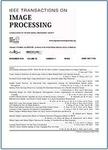版权所有:内蒙古大学图书馆 技术提供:维普资讯• 智图
内蒙古自治区呼和浩特市赛罕区大学西街235号 邮编: 010021

作者机构:Xidian Univ Xian 710071 Peoples R China Xidian Univ Hangzhou Inst Technol Hangzhou 311231 Peoples R China Chongqing Univ Posts & Telecommun Chongqing Key Lab Image Cognit Chongqing 400065 Peoples R China Xidian Univ Sch Elect Engn State Key Lab Integrated Serv Networks Xian 710071 Peoples R China
出 版 物:《IEEE TRANSACTIONS ON IMAGE PROCESSING》 (IEEE Trans Image Process)
年 卷 期:2025年第34卷
页 面:1022-1035页
核心收录:
学科分类:0808[工学-电气工程] 08[工学] 0812[工学-计算机科学与技术(可授工学、理学学位)]
基 金:National Natural Science Foundation of China [62372348, U22A2096, 62036007] Key Research and Development Program of Shaanxi [2024GXZDCYL-02-10] Shaanxi Outstanding Youth Science Fund Project [2023-JC-JQ-53] Shaanxi Province Core Technology Research and Development Project [2024QY2-GJHX-11] Fundamental Research Funds for the Central Universities [QTZX23042]
主 题:Object detection Training Semisupervised learning Perturbation methods Detectors Data models Accuracy Location awareness Feature extraction Electronics packaging Dense information learning relation consistency regularization semi-supervised learning object detection
摘 要:Semi-Supervised Object Detection (SSOD) aims to improve the utilization of unlabeled data, and various methods, such as adaptive threshold techniques, have been extensively studied to increase exploitable information. However, these methods are passive, relying solely on the original image data. Additionally, existing approaches prioritize the predicted categories of the teacher model while overlooking the relationships between different categories in the prediction. In this paper, we introduce a novel approach called Dense Information Learning (DIL), which actively generates unlabeled data containing densely exploitable information and forces the network to have relation consistency under different perturbations. Specifically, Dense Information Augmentation (DIA) leverages the prior information of the network to create a foreground bank and actively incorporates exploitable information into the unlabeled data. DIA automatically performs information enhancement and filters noise. Furthermore, to encourage the network to maintain consistency at the manifold level under various perturbations, we introduce Relation Consistency Regularization (RCR). It considers both feature-level and image-level perturbations, guiding the network to focus on more discriminative features. Extensive experiments conducted on multiple datasets validate the effectiveness of our approach in leveraging information from unlabeled images. The proposed DIL improves the mAP by 12.6% and 10.0% relative to the supervised baseline method when utilizing 5% and 10% of labeled data on the MS-COCO dataset, respectively.